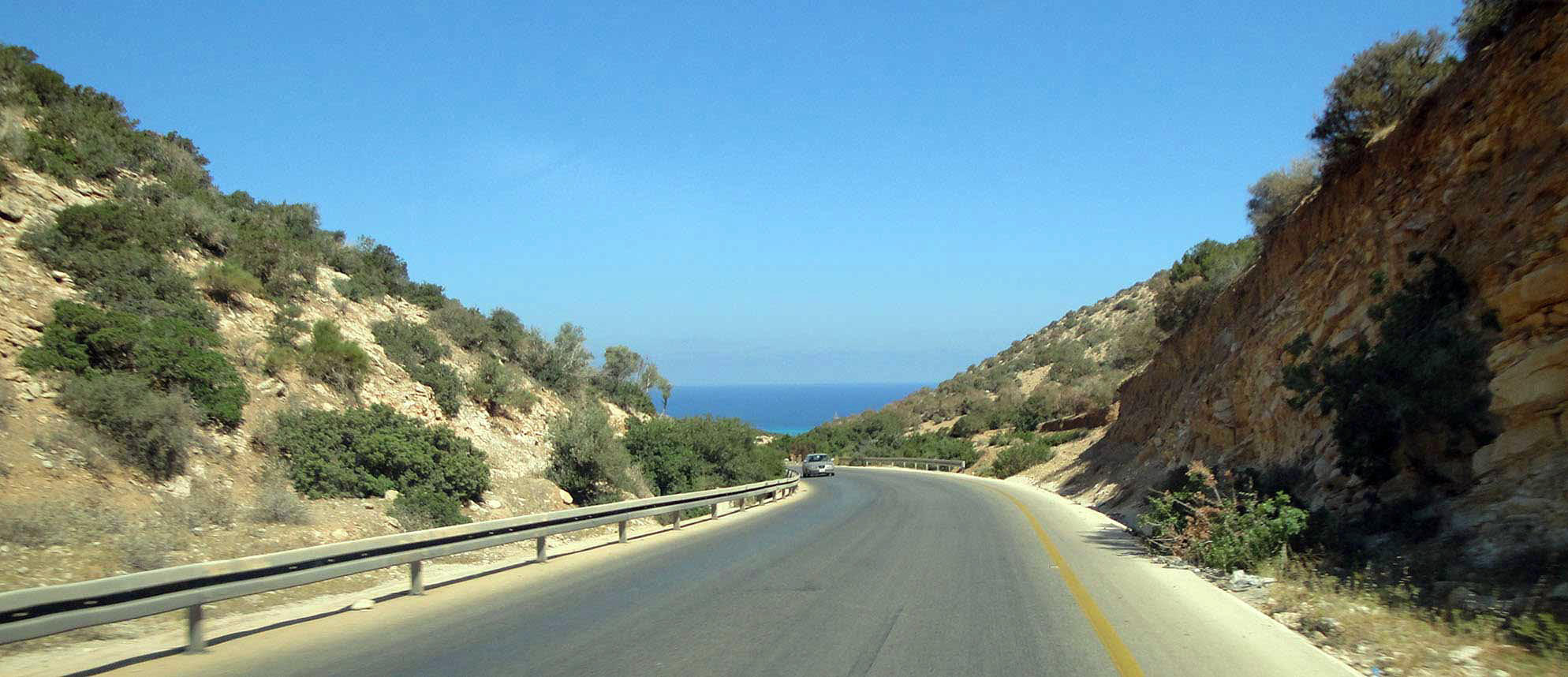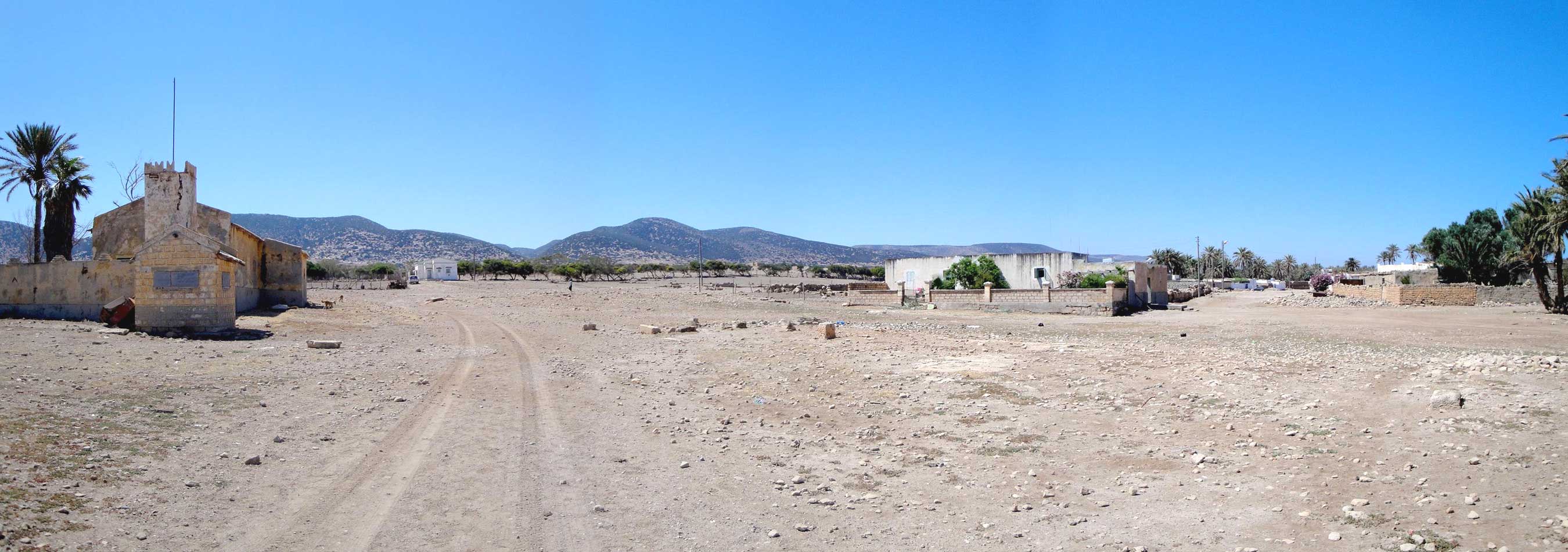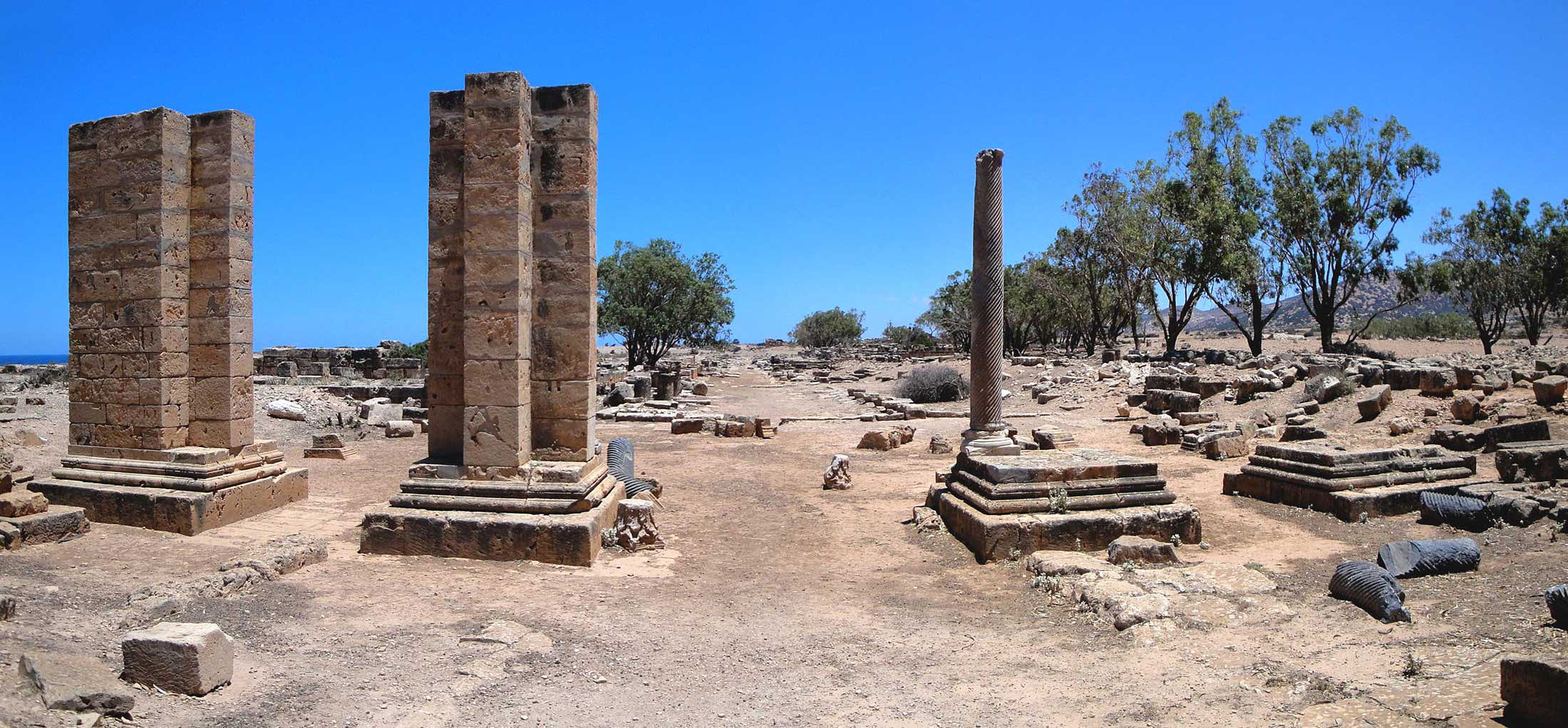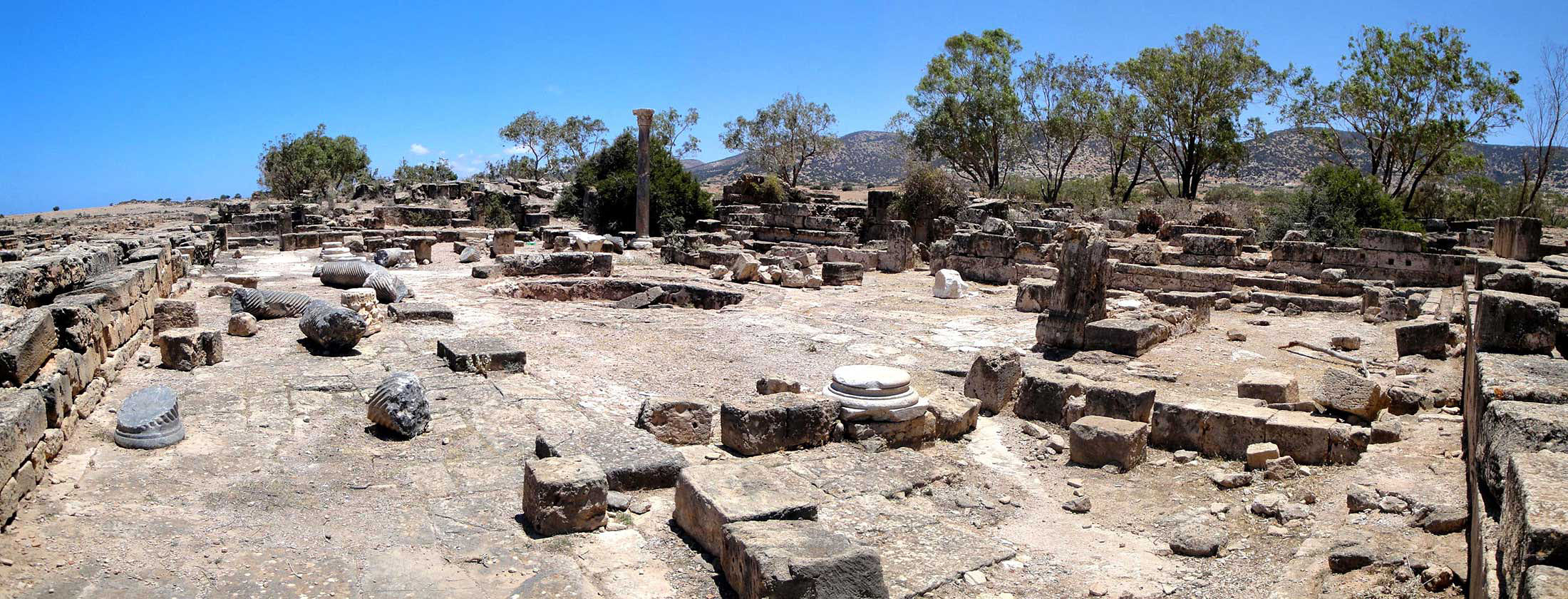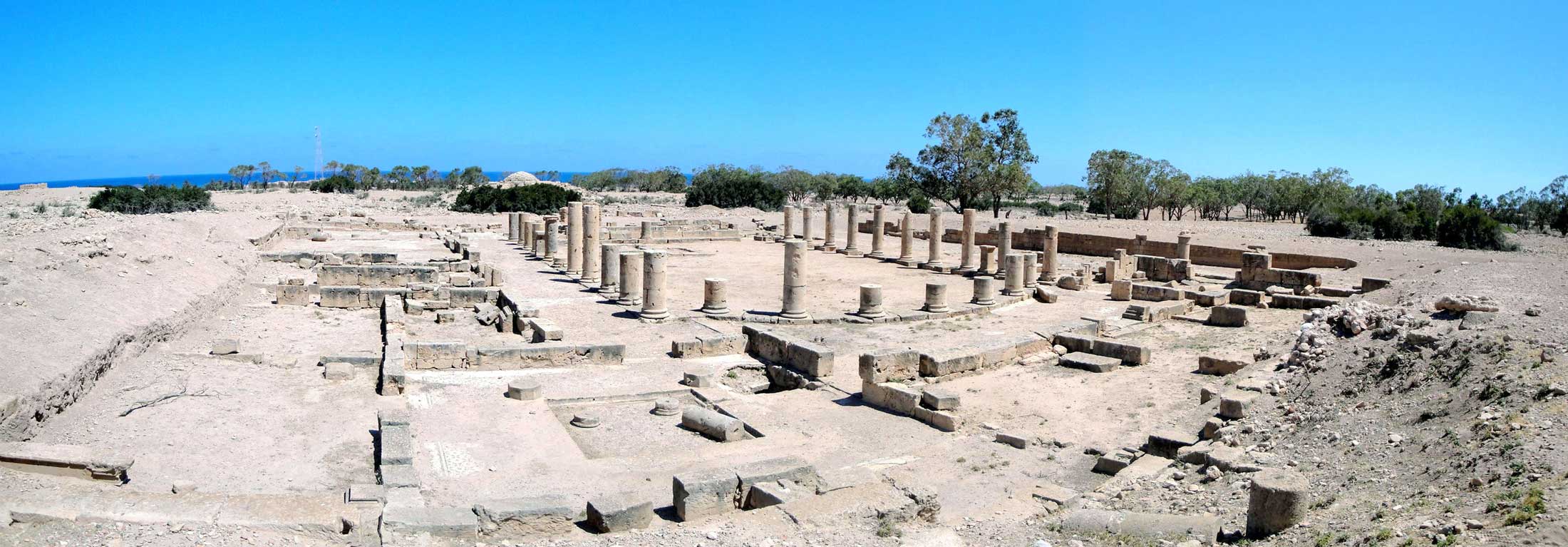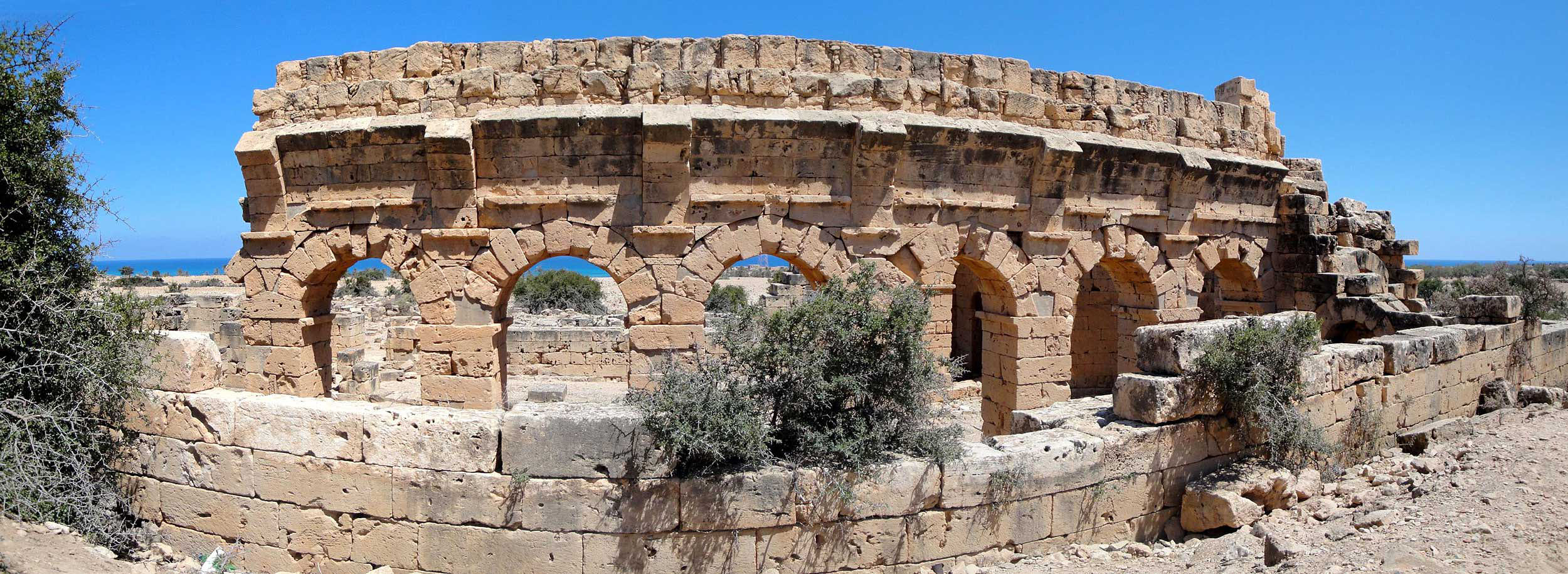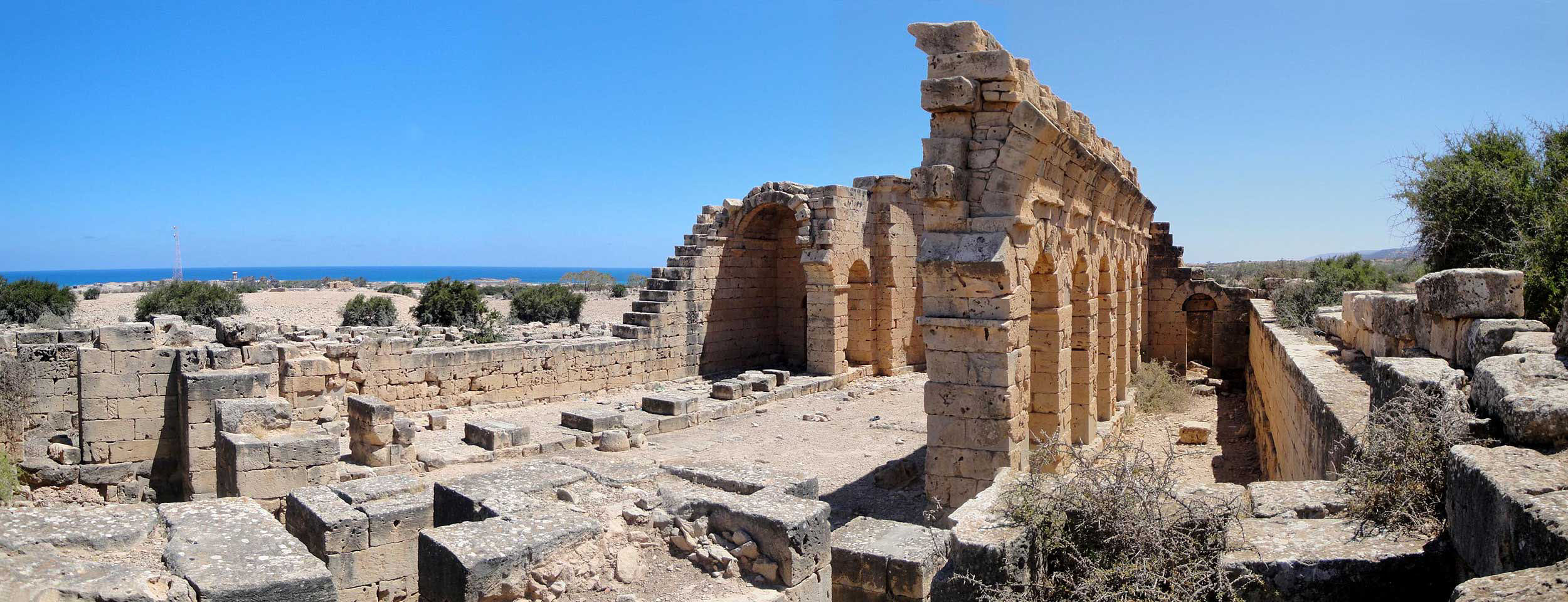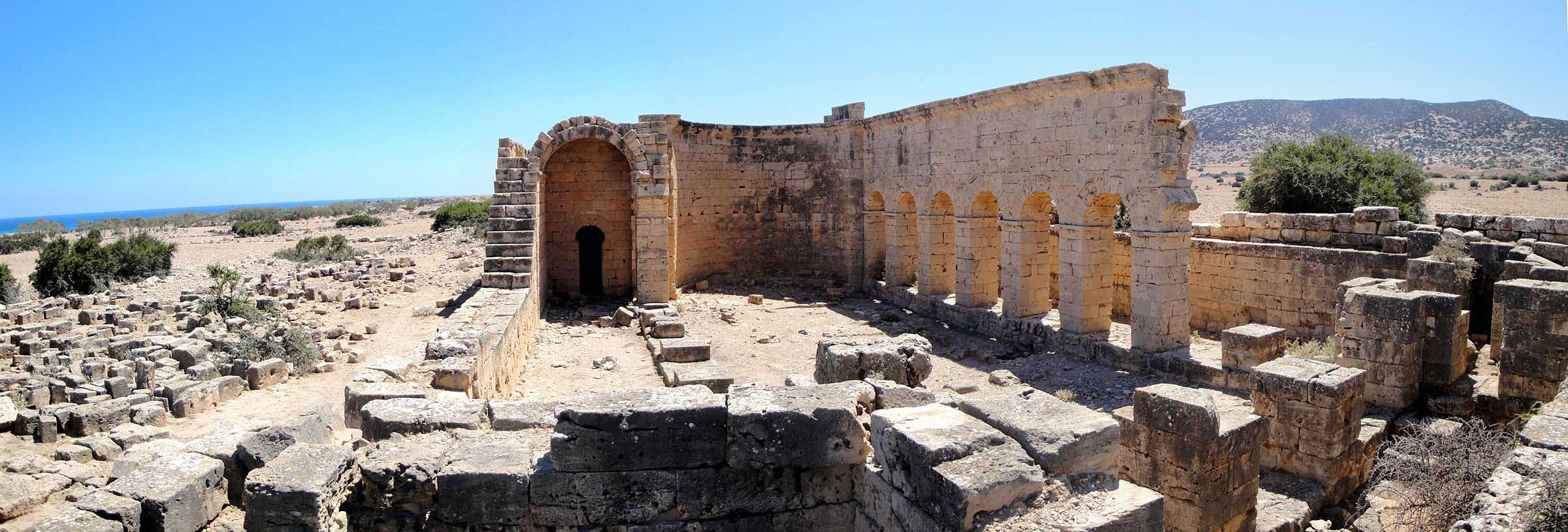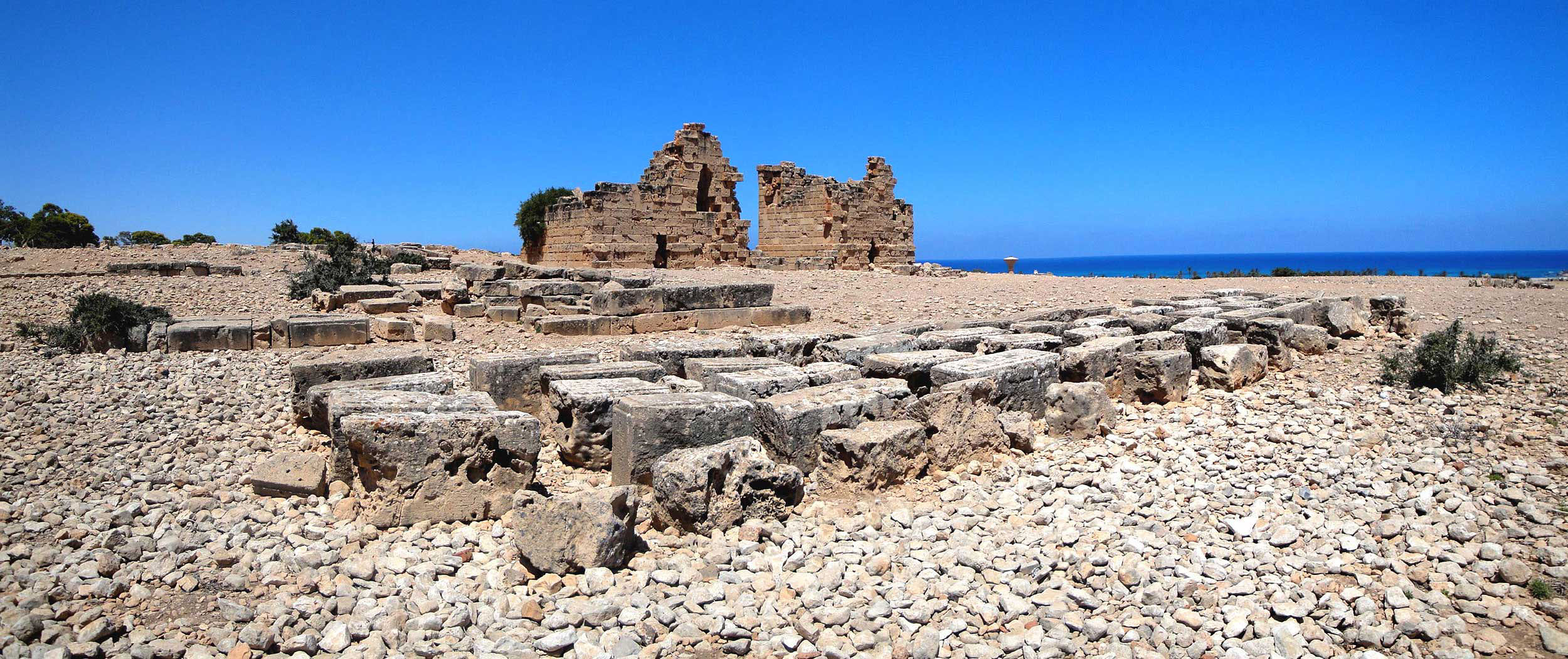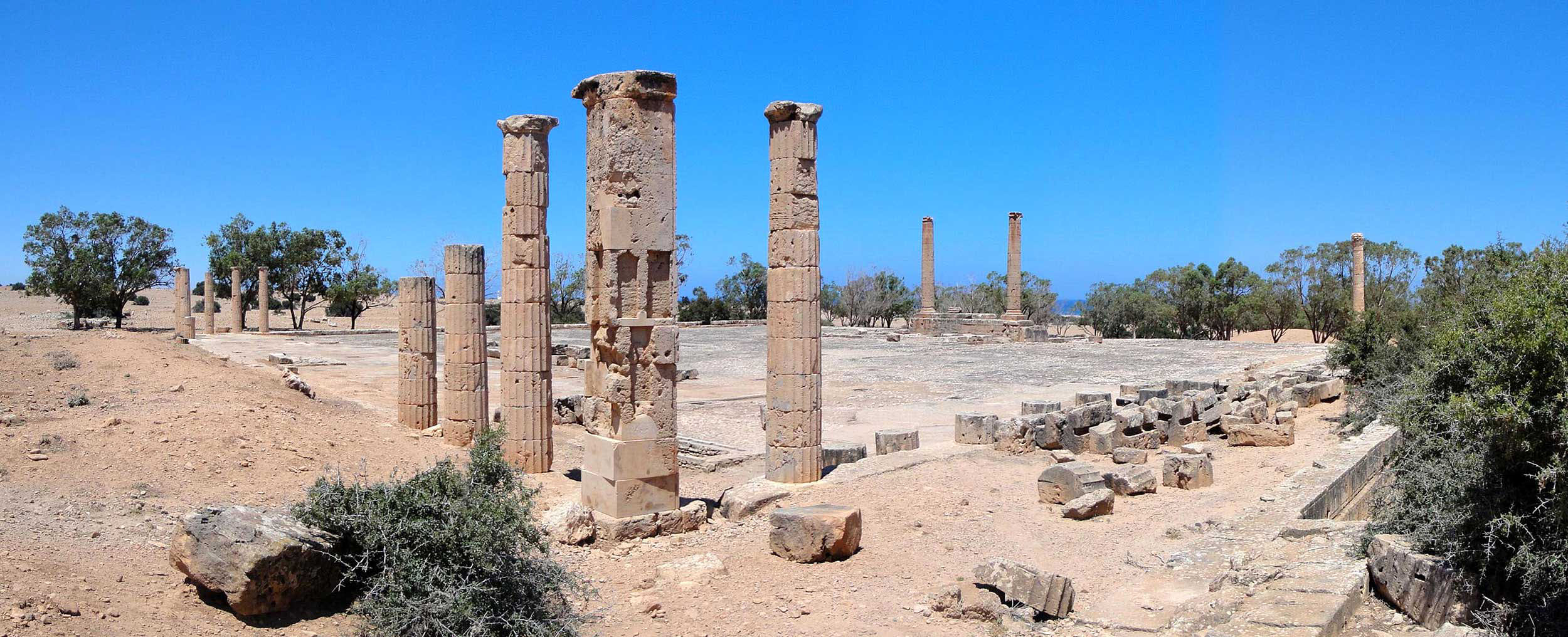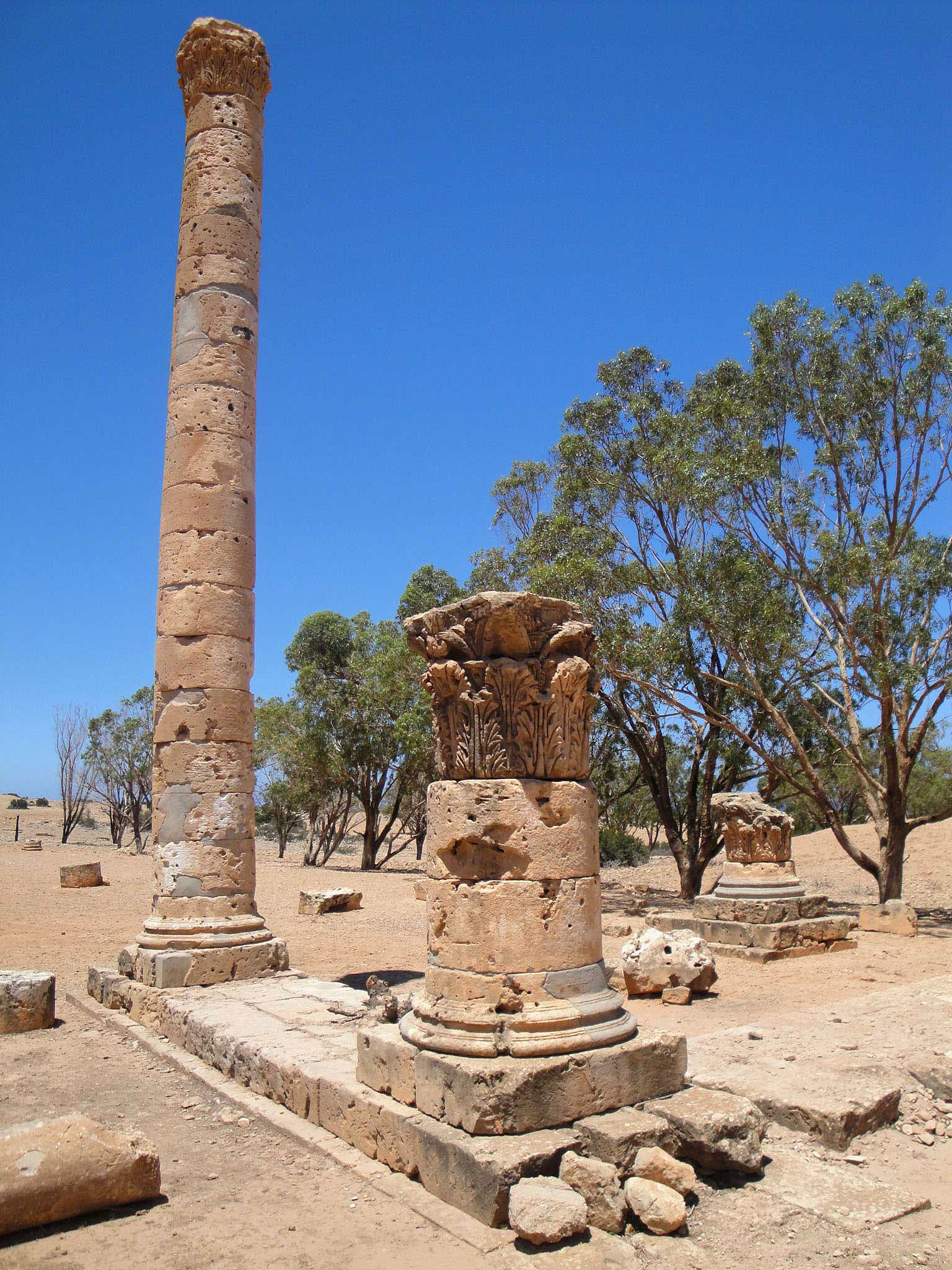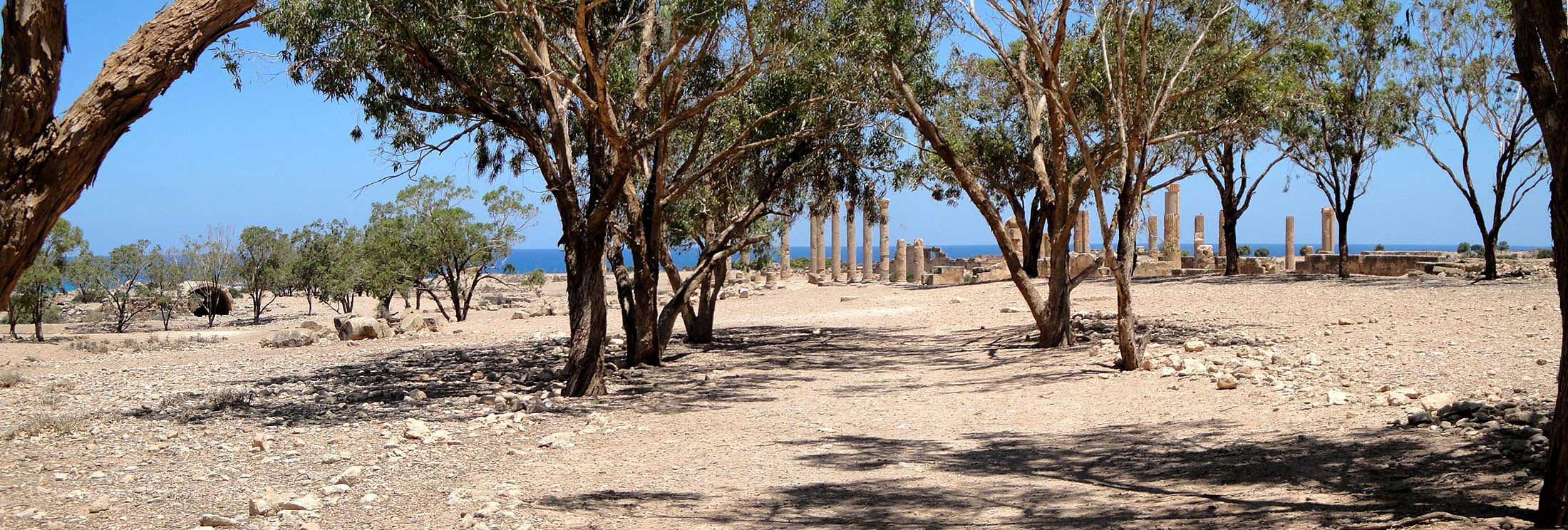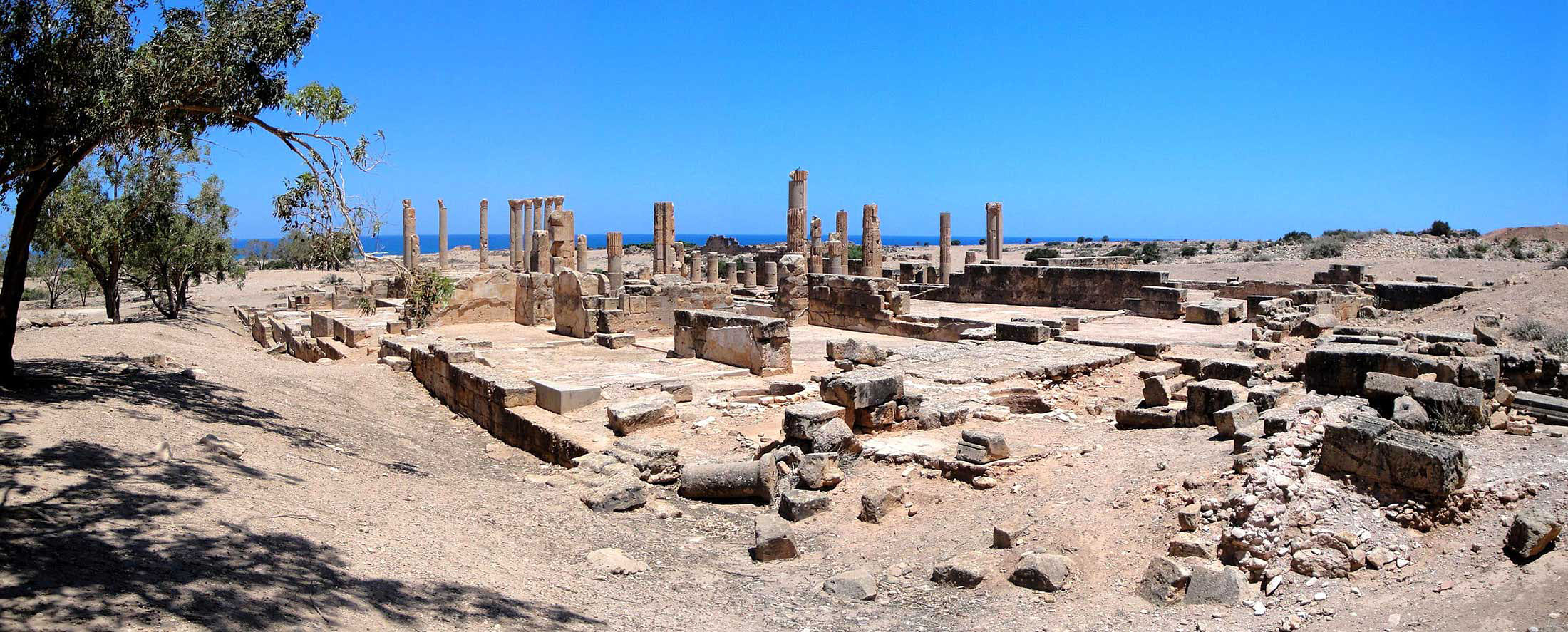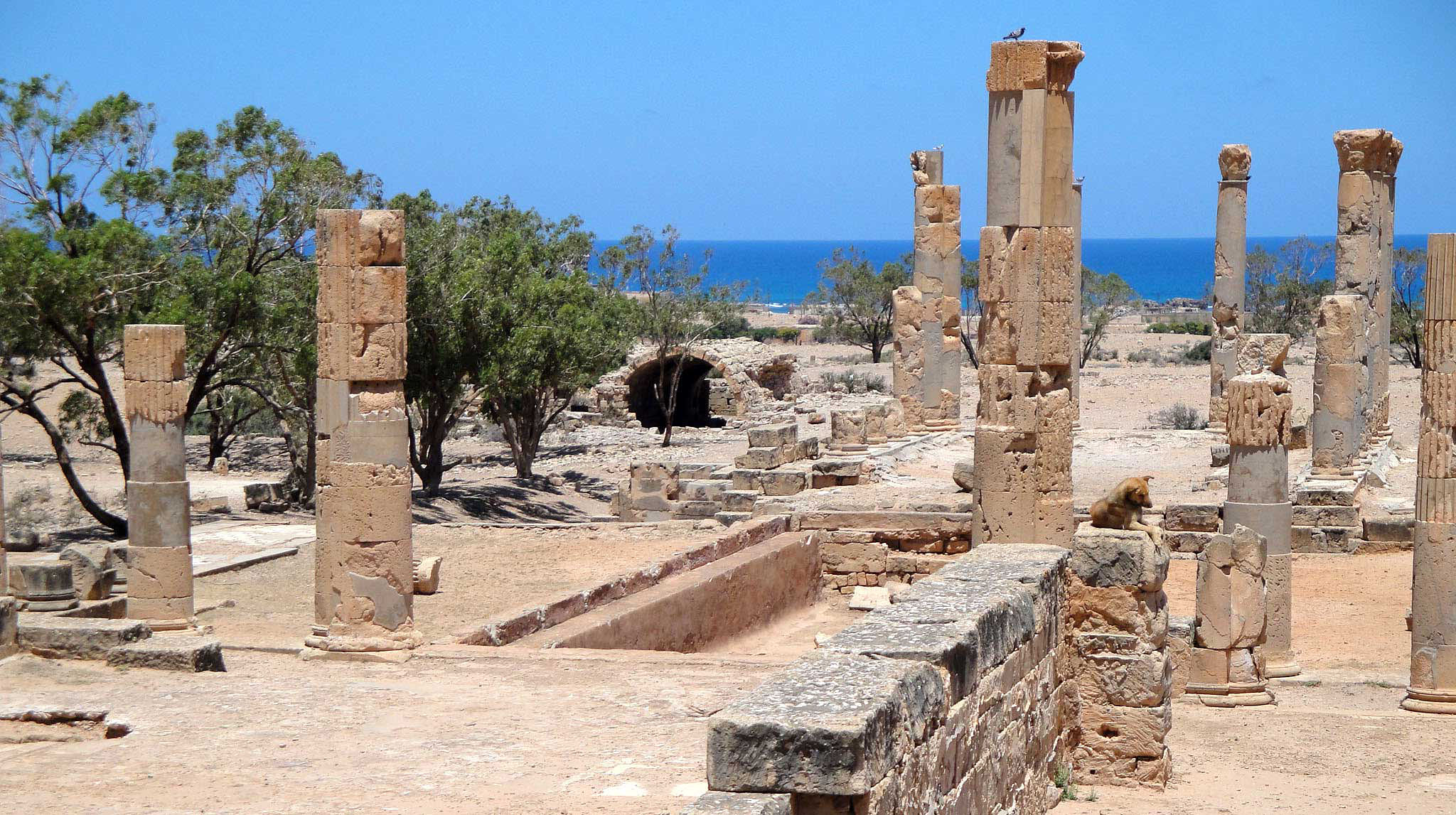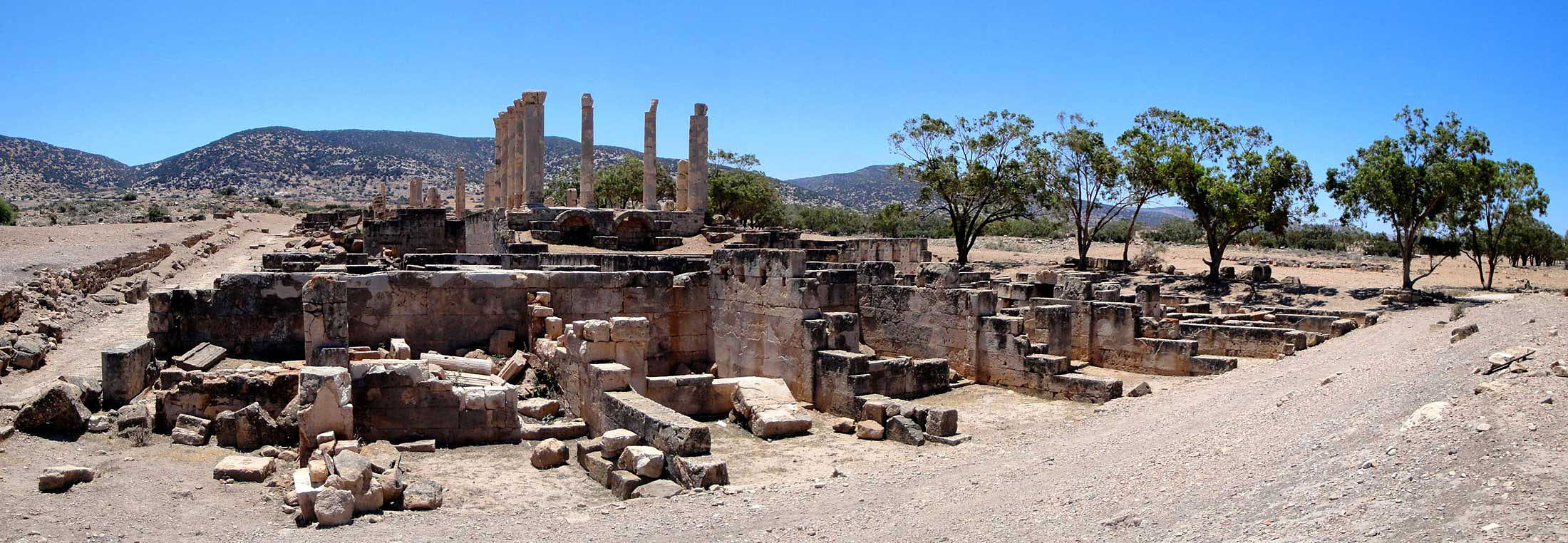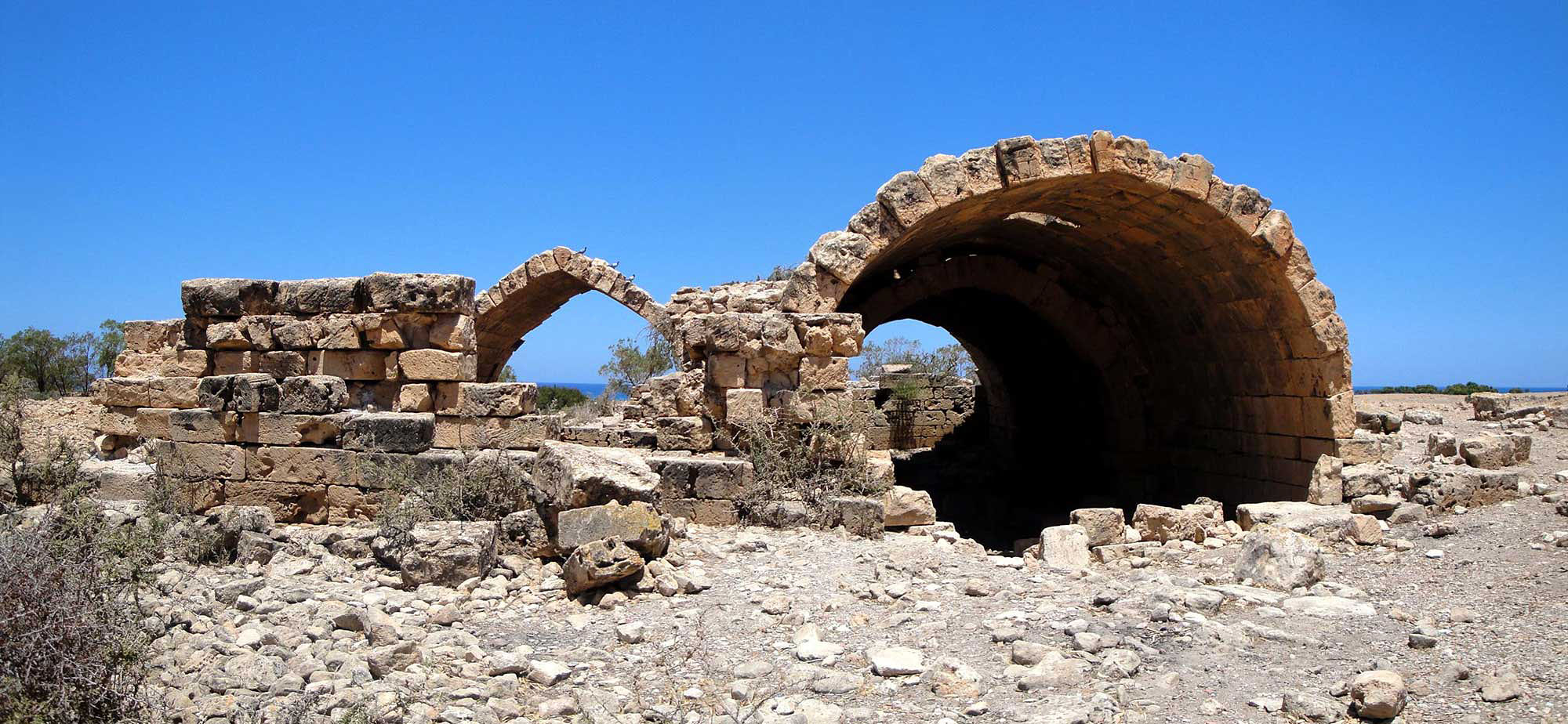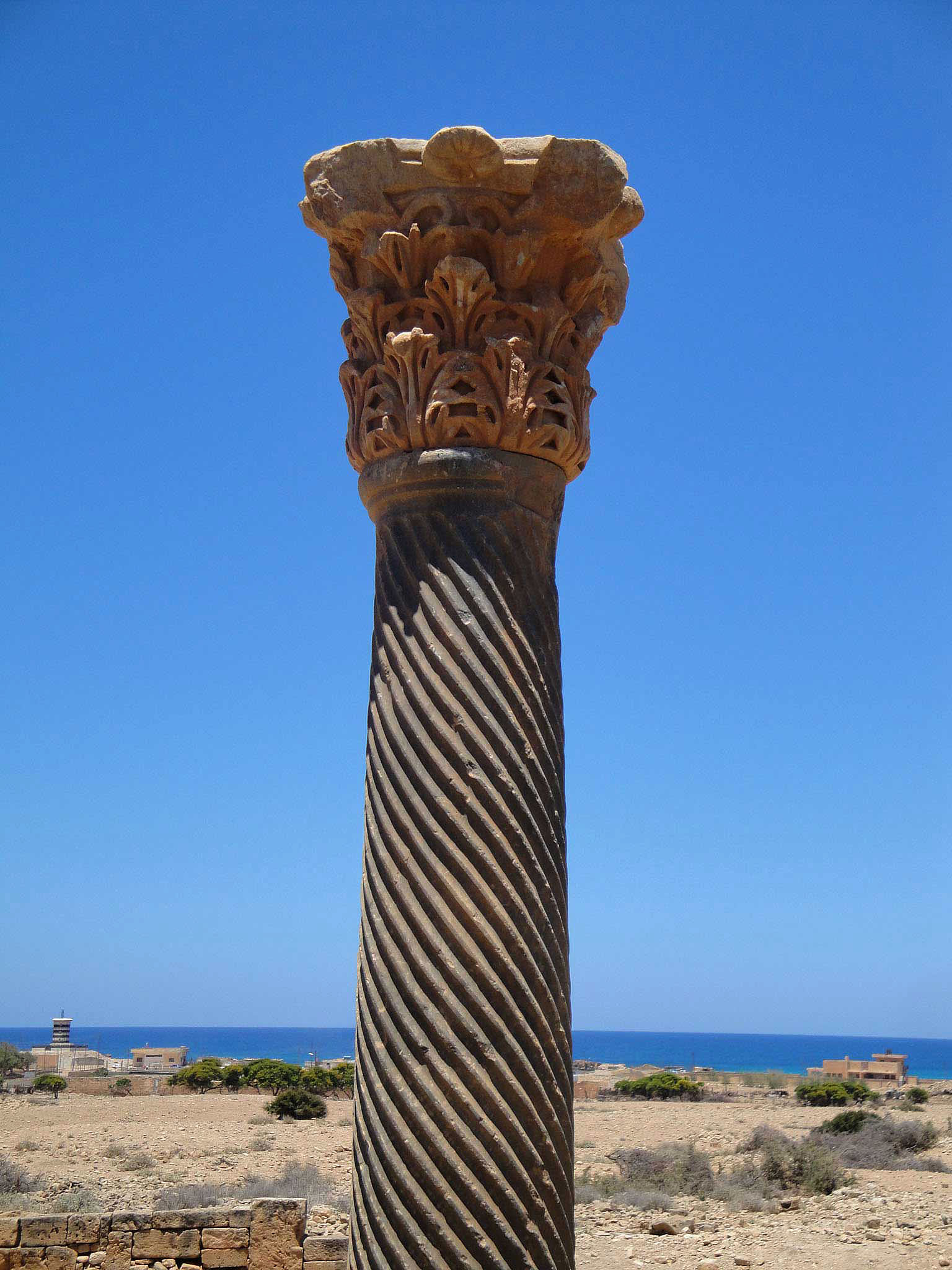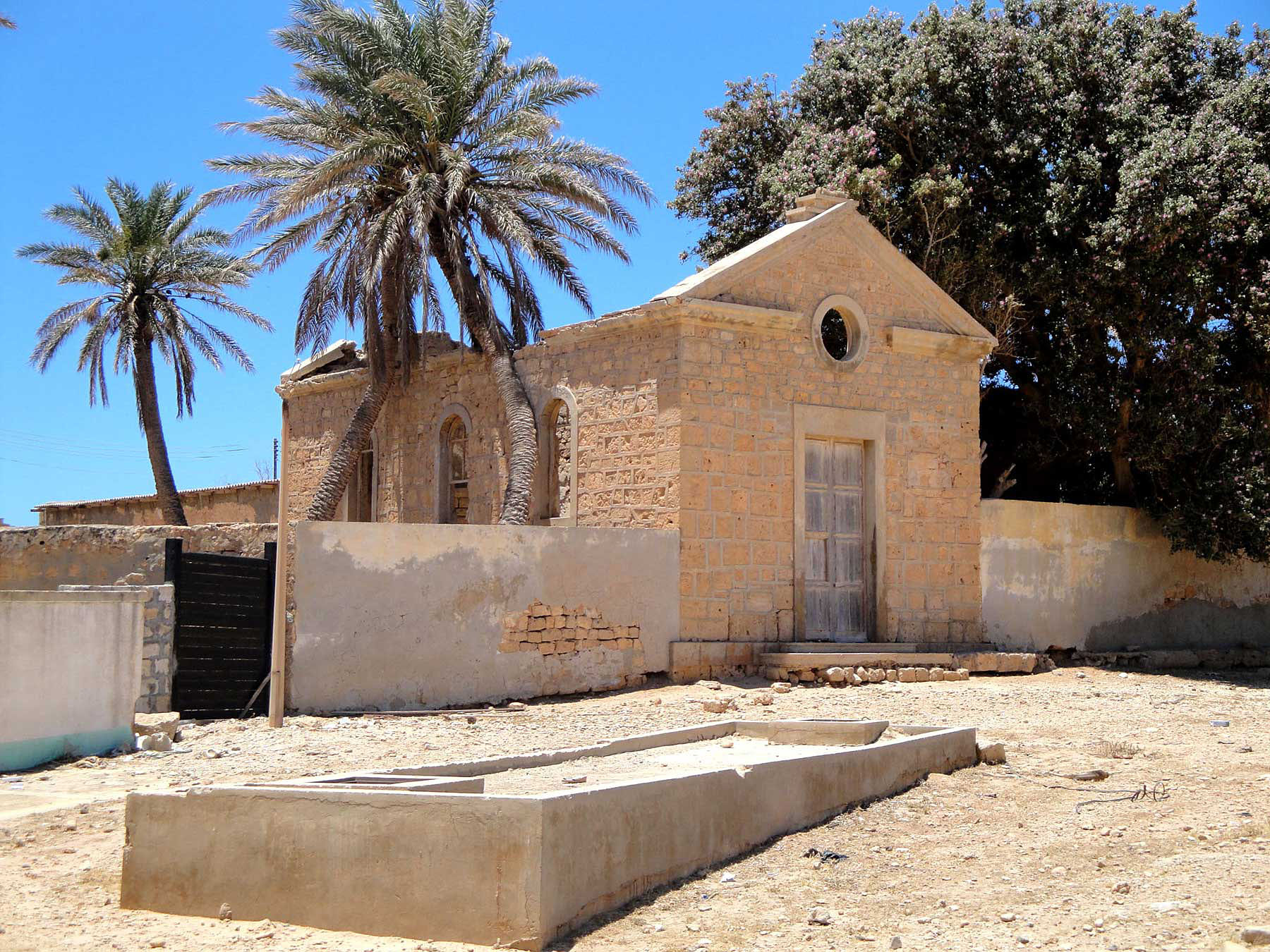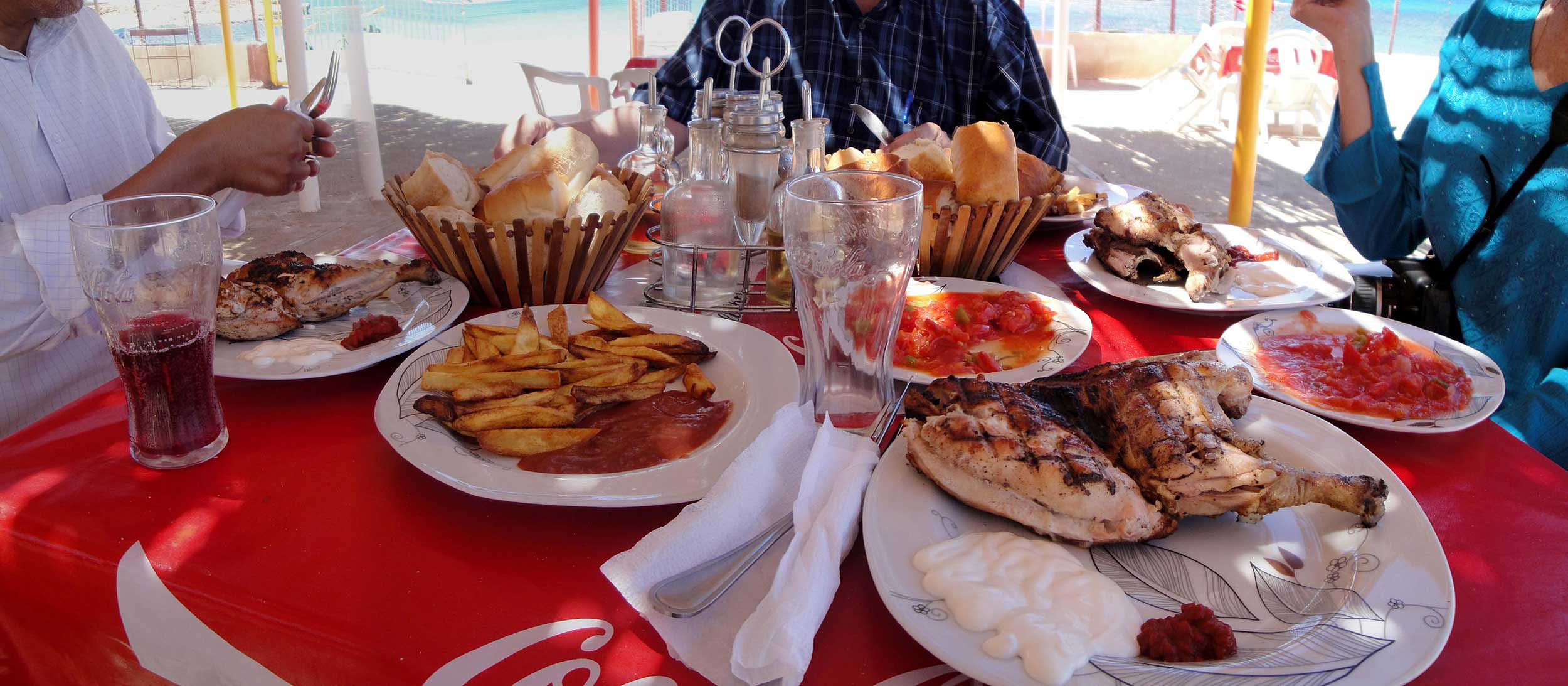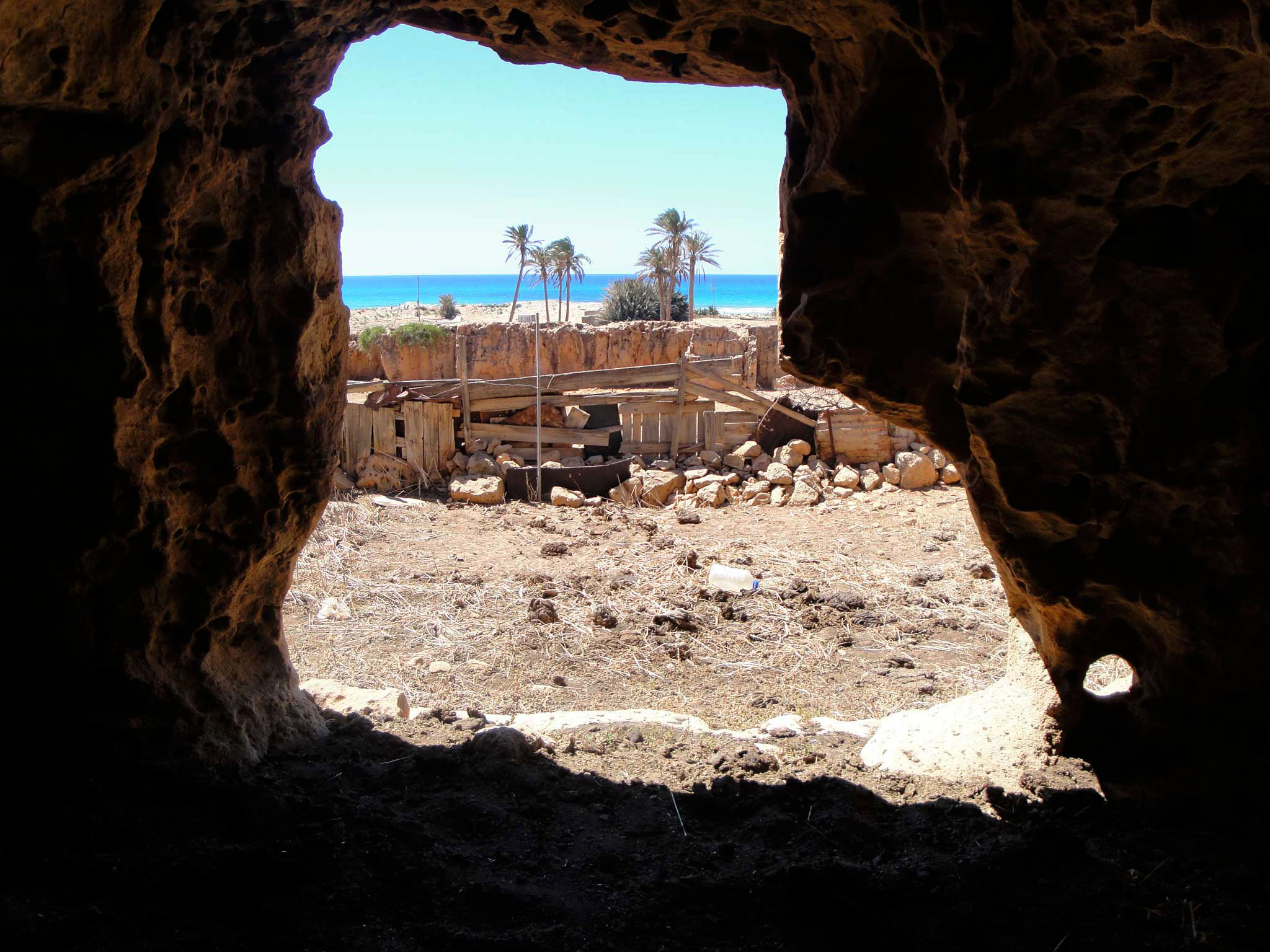Ptolemais
Ptolemais is located next to the small village of Tolmeta, about two hours drive east of Benghazi. The drive is across part of the Green Mountains, or Jabal al Akhdar Mountains. The first sight of the Sea after descending from the mountain is this beautiful vista on a crystal clear morning.
Panorama of the coastal plane, with the town of Tolmeta at the far right.
The ancient city of Ptolemais is preserved in a large national park. The entrance is through this shaded area in front of the museum on the left and snack bar on the right. Ptolemais was founded in the 4th century BC and remained a Greek city until around 100 BC when the Romans took over. Under the Greeks it was a thriving city covering about three square kilometers. Only about 10% of the site has been excavated and studied.
Surprisingly, the actual ruins are about a half kilometer beyond the museum. After the walk, entry is through the white gatehouse located center left in this photo. Jabal al Akhdar Mountains in the background.
First sight of the remains is this gateway called the Three Roman Arches. The main monumental road, or decumanus, heads off to the east.
Another look directly up the decumanus.
Half way up the decumananus is this Marble Fountain area of several beautiful bathing pools. Dedicated to Bacchus, it must have been the place for some good parties. Didn't they know Libya was supposed to be non-alcoholic?
Villa of the Four Seasons. A wealthy Roman villa built in the 4th century AD. Mosaics and bathing pools.
Some mosaic flooring visible on the left.
Heart of the Villa.
A fortified church building from around 500 AD.
This Byzantine structure was built to last.
The Tocra Gate was the main entrance to the western side of the city. The road from the cities of Esperides and Teucheria entered from this gate.
The Tocra Gate from the outside looking in to the east.
The cistern area of the city was the center of much activity. In Greek times this elevated cistern platform was used as a marketplace. The Romans used it as their Forum. The main cistern is under the flat paved area to the right. To the left is a large uncovered resevour. The channel in the rock coming towards us in the photo was the main fresh water culvert supplying the city located downhill behind (north) us.
The buried cistern covers this large area bordered by the columns. Roughly the size of a soccer field.
Another look from the southeast corner. The city is located downhill to the right (north). Water was obtained from the mountains by means of a 25 kilometer long aquaduct.
Inside one of the cistern rows. The entire cistern is made up of many such rows, all open to each other through the connecting doorways along the lower solid rock sides. The Greeks built the original cistern and capped it with stone slabs laid across the vertical stone walls which end about shoulder height. The Romans added the arched portion above the old vertical stone walls, nearly doubling the capacity. The mortar and structural strength of the Roman addition is still solid as rock.
Top of the cistern. Big enough to hold large crowds of people when the Forum was in session. During the Libyan resistance movement against the Italians in the 1920's, the resistance fighters occasionally used the underground cistern as one of their centers of operations.
Several small temples were located along this northen side of the cistern.
Temple column detail.
The Odeon Theatre.
The rock pedistals at the back of the stage held statues of Claudius, Marcus Aurelius and Archimedes which are now housed in the museum.
Facing straight west, half of the Torca Gate is just visible in the far distance at the edge of the tree center left in the background.
Strolling down the road (the 2nd Cardo) towards the Villa of Columns. The arched roofs of a Byzantine cistern visible on the left.
This was a large villa belonging to a wealthy Roman.
The interior floor were all covered by mosaics. Bathing pool in back.
A closer look.
The site is owned by this watchful dog.
Final look from the north.
Two Byzantine cisterns just behind the Villa.
Detail. A beautiful column.
The port of the present town of Tolmeita is the same port used by the Greeks and Romans. The small rock islands act as a breakwater to provide safe harbor for small vessels.
The town of Tolmeita is mostly a relic of the Italian occupation years. This small church would be at home anywhere in Italy.
Fortunately for us there is a new beach-side restaurant offering hooka smoking (we passed) and excellent grilled fish and chicken.
Great fare after many hours of walking around ruined cities. Or anytime!
After lunch we stopped to explore this interesting area. After climbing down onto the lower ground level it became apparant that this was the quarry used by the Greeks and Romans to obtain rock to build their city and buildings. The tall structure in the center is an ancient lighthouse. The block of stone it is sitting on is the original ground level before quarrying. Other blocks of unquarried rock are visible right and left.
The lighthouse. On the original ground level.
Some left over parts and pieces of shaped rock. Rejects due to flaws or mistakes.
More parts and pieces. Fluted column sections and rounded bases. The vertical edge of the quarry can been seen on the right.
Curious, I went over to explore this block of unquarried rock.
It turned out to be hollow. This look at the back shows how some natural caves inside had been enlarged to create a perfect stables for the goats that roam this property. The tool marks left by quarry workers several thousand years ago are clearly visible.
The goats' view. Opps, I can't believe I stepped into that...!
Time to bid farewell to this site and the city of Ptolmais. There's a lot more to discover here on future visits.
